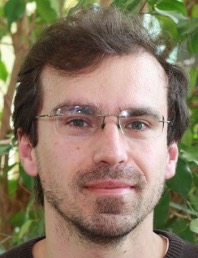Materials
Screening for Anderson Localization in Disordered Chalcogenides
Riccardo Mazzarello1*,
Yazhi Xu1,2, Xudong Wang2, Wei Zhang2
1 Institute
for Theoretical Solid State Physics and JARA, RWTH Aachen, 52056 Aachen,
Germany
2 Center for Advancing
Materials Performance from the Nanoscale and Materials Studio for
Neuro-inspired Computing, Xi’an Jiaotong University, Xi’an 710049, China
ABSTRACT: Disorder-induced
Anderson localization and metal-insulator transition have been a central topic
in both condensed matter physics and materials science in the past 60 years.
Recently, Anderson localization has been observed in Ge-Sb-Te alloys forming a metastable
rocksalt-like phase with high concentration of atomic vacancies (~10%). This
phase is obtained by rapid crystallization from the amorphous state in
phase-change memory devices and, thus, is of considerable technological
importance. For demanding applications in phase-change electronics or
photonics, it is crucial to have a pool of materials with tunable electronic
and transport properties, including band gap size and electron localization
length. Therefore, it is of pressing need to carry out a systematic search for
compounds exhibiting Anderson localization features.
Here,
we demonstrate by ab initio simulations and transport experiments that the
parent compound of Ge-Sb-Te alloys –Sb2Te3– is also an
Anderson insulator in the rocksalt-like structure, and elucidate why such
disordered crystalline phase can form, extending the exploration of Anderson
insulators to binary chalcogenides. We then carry out a systematic ab initio
computational screening over all binary and ternary chalcogenides with V2VI3
and IVV2VI4 compositions and identify 47 (meta-)stable
rocksalt-type compounds that can sustain a high degree of disorder. Our
large-scale electronic structure calculations reveal that most of these
disordered chalcogenide crystals are Anderson insulators, with localization
length of ~0.5–2 nm and band gap size of ~0.2–1.8 eV. Moreover, we obtain an
in-depth understanding of the critical factors that affect the stability of the
rocksalt structure, namely, sp3 mixing and atomic radius ratio, and
distinguish (meta-)stable compounds from unstable ones in a rationalized
materials map. We show that this map can be employed to predict the properties
of thousands more compositions with varying localization length and band gap
size so as to expand the application range of phase-change materials.
Keywords:phase-change materials; Anderson insulators; metal-insulator transitions

Dr. Riccardo Mazzarello has been professor of theoretical nanoelectronics and computational solid-state physics at RWTH Aachen University, Germany, since 2009. He is a computational physicist working in the fields of condensed-matter physics, mesoscopic physics, and materials science. His main research interests include phase-change materials, surface physics, and two-dimensional materials, which he investigates using ab initio methods.